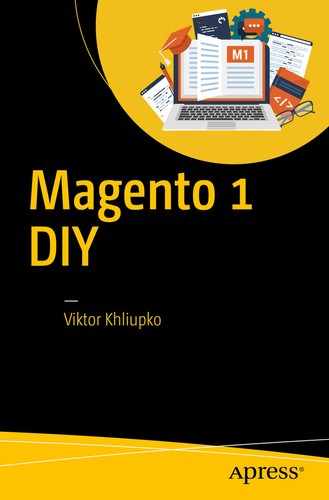
This chapter begins with a detailed guide to getting all Magento EE features on the Community platform. Later, I share other features that are useful for reaching new ecommerce levels.
Turning Magento Community Edition into Magento Enterprise Edition (How to get all Magento EE features on the Community Platform)
Although the Magento Enterprise Edition offers many more opportunities than the Community Edition does, you can always make your CE online store much more robust. In this chapter, I share my experience with turning a Magento Community website into a Magento Enterprise–class ecommerce solution.
First, I should tell you about the advantages of Magento Enterprise over Magento Community. The platform is better optimized for a large number of products. It includes full-page caching by default. There are integrated rollback and backup systems in the Enterprise Edition. The platform is highly scalable and it has an out-of-the-box enhanced tax calculation system. There is also a faster checkout, as well as tons of advanced admin features, such as the ability to easily manage customer attributes. I must mention that a gift-wrapping option is built into Magento EE. Furthermore, the Enterprise Edition offers advanced marketing and segmentation, as well as private sales.
The features in Magento EE include PCI compliance; gift registries, points, and cards; a return management authorization system; Solr Search; automated email; multiple custom landing pages; cross-sell, upsell, and recommended products; and customer-assigned shopping. Another important advantage of the platform is 24/7 developer support. In addition, all patches are pre-installed, which makes your store more secure. Luckily, you can get all of these features within your CE website.
But what are the drawbacks of Enterprise Edition? The platform costs $12,000 per installation per year, which is a lot for small and mid-sized businesses. In fact, Enterprise Edition is nothing more than Community Edition with several additional modules: CE consists of 65 modules, whereas EE includes 41 more extensions. Note that these additional modules can be installed with the help of third-party extensions. Some of the modules are bug fixes. Some of them are considered useless. You will probably never need all the features exclusively offered by EE, but they are mandatorily pre-installed. Enterprise Edition is heavier and slower than the Community Edition, as it includes a lot of additional software, which decreases website performance.
If the lack of support in CE seems to be a problem, install paid extensions. You will not only get the missing features, but also receive support from extension developers who will help you install, manage, and update purchased modules. Please note that you only have to pay once, whereas EE payments are annual.
Take a look at these blog posts for additional information: http://goo.gl/GUpa8R and http://goo.gl/fqF2gd . You can also watch this video: https://goo.gl/Lwcn3M .
The total price of all paid (unfortunately, there are no free alternatives for every module) extensions is $722. Since a basic hosting price is $20 a month ( https://goo.gl/8NeYTe ) and the average price of a good Theme Forest template is $100 ( http://goo.gl/AQ14oI ), you can run an Enterprise-level Magento Community based online website for less than $1,000!
Order Archiving
“Increase store performance and provide efficiencies in store management through an order archiving module, enabling merchants to archive orders after a configurable time. Orders are still available to both administrators and customers, providing increased performance by storing historical orders in an archive.”
The following two extensions significantly extend Magento order management and provide the order archiving feature for the Magento Community Edition: http://goo.gl/4FM9eF and http://goo.gl/qlUKxj .

Figure 4-1. Order Archive by Amasty
Solr Search
“An alternative to the standard Magento search, Solr Search offers site-search options and enhancements to the speed, quality, and relevancy of search results provided to customers. Performance and search quality are improved with layered navigation and features like spelling/ synonyms/stopwords and weighted attributes.”
Solr Search is not the only way to improve the Community Edition’s default search option. You can check the most reliable solutions on the Firebear blog here: http://goo.gl/jbpPj2 . I recommend that you pay attention to the Elasticsearch and Sphinx engines as alternative solutions to the default Magento CE search, or you can still use the Solr engine offered by Magento EE. There is even a free module designed for running Solr Search on Community Edition. You can download it from GitHub ( https://goo.gl/cZTjoc ) or Magento Connect ( http://goo.gl/H6SEzE ).
Solr Bridge Search is a paid solution. It provides Enterprise-level support and cloud-based features. You can get Solr Bridge Search for your Community Edition store here: http://goo.gl/85n6Tp . There is also an appropriate page on Magento Connect: http://goo.gl/FA297 . Additionally, you can see the extension’s demo here: http://goo.gl/4zCw6S .
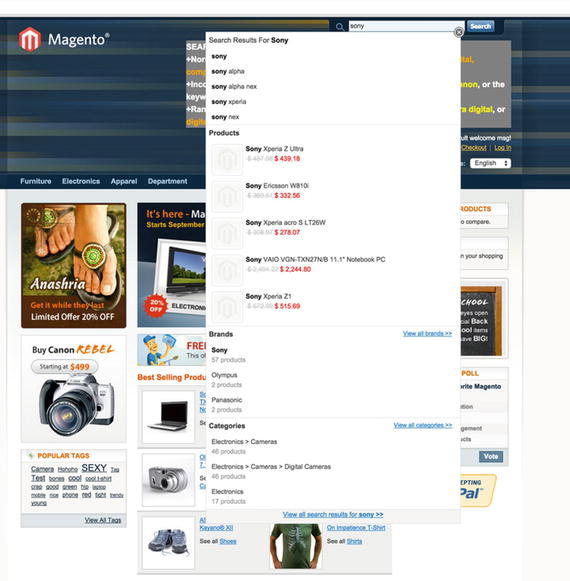
Figure 4-2. Solr Search
Full Page Caching
“Enhance performance with caching of primary pages, including category, product and CMS pages for all users, including session users (excludes personal information). Caching of pages generally improves server response times and reduces load.”
There are tons of amazing Full Page Cache extensions for Magento Community websites. All of these modules are designed to improve your store performance and make it faster than any Magento Enterprise site is. The best free open source Full Page Cache extension is Lesti FPC: https://goo.gl/NHxxDs . It’s a good basic solution that can be replaced at any time with more robust software.
Another important aspect of full-page caching in the Community Edition is cache storage. I recommend that you use Redis, since all FPC extensions support both its free and paid versions. Thanks to a huge and productive community, we have a free way to implement on CE: https://goo.gl/ADmnV4 .
The best paid Enterprise-level Magento Full Page Cache extension is Extendware Page Cache: Full Page Cache ( http://goo.gl/s4DeLH ). I’ve used it with many high-load Magento Community projects and it always shows amazing performance. Dozens of flexible settings, smooth integration with Magento templates, the “hole punches” system for handling dynamic Ajax blocks, partial cache flushing for specific entities—all of these features are available in the Community Edition. Please note that the default Magento Enterprise FPC system provides narrower opportunities.
See a full list of The Best Magento Full Page Cache Extensions1.
In addition to Full Page Cache, it’s important to get a full-page cache warmer—an extension that allows you to pre-generate FPC for every page of your website. A crawler/warmer visits every page of a website by performing a cron job, or you can do everything manually. As a result, your visitors get cached pages with amazing speed, which significantly decreases the bounce rate among first-time visitors. The best free open source solution is Magento Full Page Cache Crawler by Maveric ( https://goo.gl/3pJOdw ). It provides the ability to crawl pages manually or by performing cron from a command line and Magento admin.
The best Enterprise-level solution that supports multiple store views and currencies, and crawls all kinds of custom pages and modules, is Extendware’s Cache Crawler: Cache Warmer ( http://goo.gl/cyXZy7 ). The module leads to a significant performance boost if used along with the Extendware Full Page Cache extension. Together, they provide unique opportunities related to cache logging—extensions collect the most visited custom URLs (as well as any kind of URL—filters, search results, sorting, etc.) and then crawls them. As a result, you get bounce rate reduction, since visitors always get cached pages at lightning-fast speed. Although Magento Enterprise Edition provides FPC, it doesn’t have a built-in cache warmer.

Using only Full Page Cache , you will not optimize your performance. Keep in mind that it is also necessary to take care of server-side improvements. By only using Nginx, the latest PHP version, alternative MySQL engines like MariaDB, and a proper cache strategy, you can make your Magento Community Edition faster than EE. (I shed light on these improvements in Chapter 1.) Also pay attention to The Best Full Page Cache Warmers/Crawlers for Magento2.
Optimized Indexing
“Optimized indexing enables significantly faster indexing with limited to no impact to the customer’s shopping experience. This makes it easier to add and update products more frequently while ensuring URLs, promotions, navigational menus and product search tools are always up to date while never slowing down site performance. Incremental indexing reduces the need to perform a full re-index and offer most indexing operations are automated.”
Indexing is one of the biggest performance issues on both CE and EE. Product quantity increase always leads to a rising demand of time and resources. Fortunately, a Magento Community website can be optimized with the help of appropriate extensions, which are described next. All of these extensions significantly reduce the time required for the process of indexing, and run reindexing in the background.
A free, open source, community-driven solution is FastIndexer ( https://goo.gl/PNfT5l ). Another tool for speeding up catalog search reindexing is Sonassi Fast Search Index ( http://goo.gl/mnfZa2 ).
Another Enterprise-level paid extension is Fast Asynchronous Re-indexing ( http://goo.gl/v03pvs ).
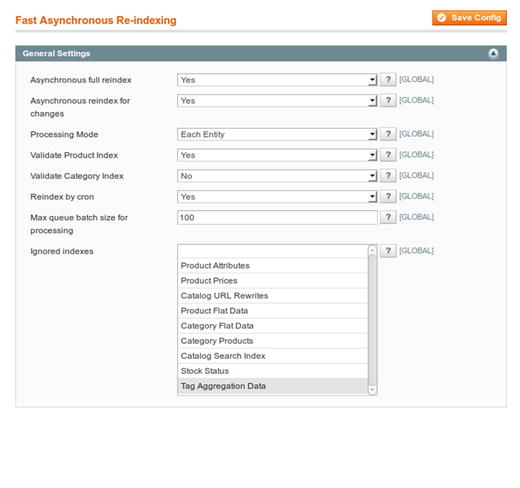
Figure 4-3. Fast Asynchronous Re-indexing
Configurable Order Tracking Widget
With this widget, customers can track the status of existing orders and returns without any need to log in to their accounts. There is a free community extension called Track Order ( http://goo.gl/jLFygF ). The best paid solutions are Mobile Order Tracking ( http://goo.gl/Og8veK ) and Advanced Order Status3.

Figure 4-4. Advanced Order Status
Support for Alternate Media Storage: CDN and Database
Media files can be stored within the database or CDN (content delivery network) on a Community Edition store due to CloudFlare ( https://goo.gl/hEiO ). Being the best free CDN solution, the platform can be integrated with your website without any extensions; it just requires several manual changes. As a result, you get lots of additional security and performance features. When using your own servers as CDN, utilize the following extension: ImageCDN ( http://goo.gl/prcjWt ). There is also a CloudFront CDN ( http://goo.gl/OXgECi ), if you don’t like CloudFlare.

Figure 4-5. CloudFront CDN
PA-DSS Certification /Payment Bridge Magento
“Secure Payment Bridge is a PA-DSS (Payment Application Data Security Standard) Certified payment application, enabling merchants to efficiently attain PCI compliance with minimum cost and effort. Customers will also be able to securely save their credit card information for future transactions. “
There are several ways to make your Magento website PCI compliant. Bear in mind that Magento CE is regarded as PCI compliant as long as you aren’t storing credit card data, since there are no requirements for the encryption of other information. Thus, for making your Community Edition store compliant, you should eliminate the use of sensitive information within your website by redirecting customers to third-party payment platforms.
The second method requires using PCI-compliant gateways, such as PayPal or Authorize.net ( http://goo.gl/cNBKFC ). Check our list of payment gateways here: Best Payment Gateways for Modern eCommerce4. There are lots of PCI-compliant solutions described in the blog post.

Figure 4-6. Authorize.Net Hosted CIM
Strong Data Encryption, Hashing, and Key Management
“Strong data encryption based on AES-256 and strong hashing based on SHA-256. Database keys are easily managed and updated.”
The Magento Community also has an encryption key feature ( http://goo.gl/cNBKFC ), but it is not very useful, so I recommend that you to check the Magento Security guide mentioned in Chapter 1.
Backup and Rollback
“Manage and schedule a variety of backup operations with the option to rollback the changes to reverse any modifications. This feature is particularly useful when testing new modules or customizations, or when upgrading to a new version of Magento. You can review specific customizations and their impact on the new code. (I do not recommend using this feature in your production environment.) There are three types of backup supported:
System backup
Database backup
Database and media backup staging
Database backup could be performed in CE, but it is not the best way to back up your store, because it is not consistent and it cannot be restored in some situations. Thus, it is better to use Sypex Dumper ( https://goo.gl/Imndik ), which is a lightweight open source tool with a simple web interface. Sypex Dumper allows you to back up and rapidly compress a MySQL database, making it stable. Additionally, it provides support for broken databases, as well as different types of import and export strategies.
Another reliable solution is PhpMyAdmin ( https://goo.gl/Ab4ZO5 ). This tool is useful for direct database management, including base URL changing. If you want to back up your Magento data to the Amazon S3 cloud, use cop_magento_backup ( https://goo.gl/cL3T31 ).
Merging and Rollback of Content
“Create a staging site to test new categories, product information, promotions etc. Content can be merged to the live site after approval, either on-demand or per a schedule. Supports on-demand, scheduled merges and rollbacks of content.”
Merging and rollback of content in the Community Edition is available with MageFlow ( http://goo.gl/w9PkPC ). It is an Enterprise-level service for Magento content migration. firegento-contentsync ( https://goo.gl/iD9eKM ) is a free open source community-driven solution for content synchronization. Genmato ( https://goo.gl/vcAXSe ) is a paid solution for CMS content and configuration migration.

Figure 4-7. Merging and rollback of content
Customer Attribute Management
“Improve sales and marketing efforts with advanced attribute management. Customer account and address attributes are managed by the Magento Administrator interface and then used to create customized marketing campaigns and customer profiles.”
Since an individual approach to customers is essential, an additional customer attribute is helpful. Unfortunately, Magento Community does not allow you to manage customer attributes at all. You can easily change the situation by applying a free module that offers customer information collection using Customer Attributes ( http://goo.gl/AnnZjU ). With the aid of this module, you will be able to use new custom attributes promotions, export, other extensions, and so forth. There is also a paid solution by the Amasty team called Customer Attributes5.
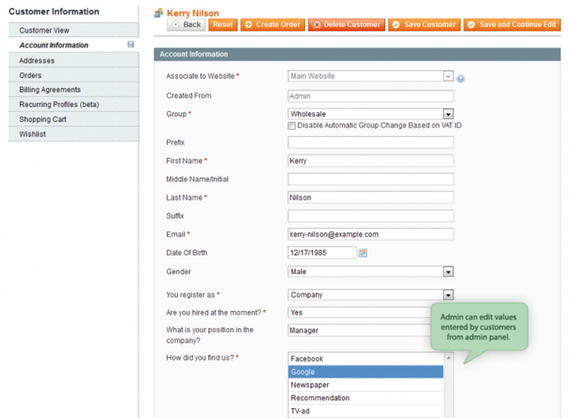
Figure 4-8. Customer Attributes by Amasty
Administrator Permission Roles on Website and Store Levels: Price and Promotion Permission
“Restrict access roles so that staff can view only the data to the stores relevant to them. Merchants can create and control multiple admin roles for reading and editing prices and promotions.”
A free community-driven extension for advanced admin permissions and roles control is AdvancedAcl ( https://goo.gl/9RS4cH ). The best Enterprise-level module is Advanced Permissions by Aitoc ( http://goo.gl/ejMD0T ).

Figure 4-9. Advanced Permissions
Logging of Administrator Actions
“Track and review all actions taken by administrator users, with the ability to see views, edits and deletions of information. Logs are associated to specific administrator users, with the ability to see the action taken, when it was made, and more.”
FireGento_AdminMonitoring is a free, open source solution for recording and viewing Magento admin actions on Community Edition. Admin Logger is a feature-rich commercial module.
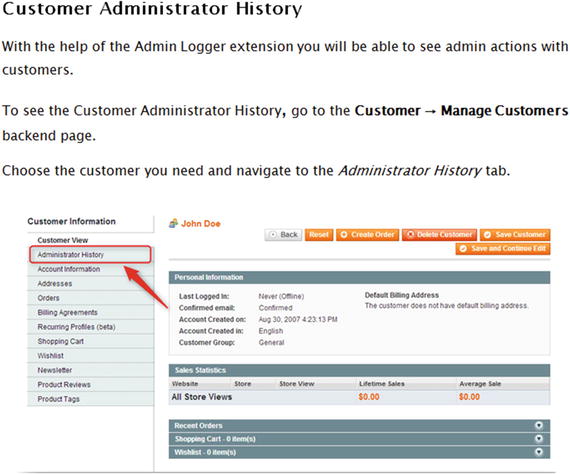
Figure 4-10. Admin Logger
Category View and Purchase Permissions per Customer Group (Limited Catalog Access)
“Manage viewing or purchasing items access by customer group. Access can be controlled globally or by specific category.”
This feature is a must-have for almost any B2B Magento shop. You can use a great, free, open source solution by Magento master Vinai Kopp called Groups Catalog 2 ( https://goo.gl/iwWJzG ), as well as a more advanced paid tool by aheadWorks called Catalog Permissions to provide a Community Edition website with the Category View and Purchase Permissions per Customer Group feature.

Figure 4-11. Catalog Permissions
Reward Points
“Enables merchants to implement programs that provide incentives to frequent shoppers, increasing customer loyalty. Points can be awarded based on a wide range of transactions and customers. Redemption rules can be controlled by merchants based on a variety of parameters including balances, expiration, customer history, conversion rate and more.”
Unfortunately, there are only paid modules designed to provide Magento CE with the Reward Points feature. The most popular paid extension is the J2T Reward Points + Referral program ( http://goo.gl/AeGSQ7 ). It costs only $50. An advanced Enterprise-level solution is Sweet Tooth ( https://goo.gl/yNa7xC ). It provides perfect integration with the Magento platform ( http://goo.gl/0Sa1ul ) and high scalability. You’ll never need to change the solution because it grows along with your business.

Figure 4-12. Sweet Tooth Loyalty and Reward Points
Store Credits
“Store credits can be created and tied to customer accounts. Orders can also be refunded with store credit or virtual gift cards which can be redeemed to make future purchases.”
There is no free store credits solution for the Community Edition yet, but you can choose between two reliable paid modules from leading Magento extension developers. The first one is Customer Credits by Mageworx. The second module is Store Credit & Refund by Mirasvit6. Both cost $150. You can review the full list of The Best Store Credit Magento Extensions7.

Figure 4-13. Customer Credits
Multiple Wish Lists
“Customers can save products to multiple wish lists and copy or move items from list to list. They can make their wish lists public so they’re searchable by anyone. And merchants can review them to learn about their customers’ wants and needs.”
MultiWishlist ( https://goo.gl/brHT75 ) is a free open source solution that allows customers to create multiple wish lists on Magento CE.
Add to Cart by SKU (Stockkeeping Unit)
“Streamline the ordering process, especially for B2B customers, by enabling them to enter a list of SKUs without having to go into product pages. This simplifies large orders, recurring orders and ordering based on offline catalogs.”
Quick or fast-order capabilities are possible on Community Edition due to a wide variety of specific extensions. I’d like to draw your attention to QuickOrders ( https://goo.gl/IKG97i ). Discover more paid solutions in our blog post on Firebear: Best Magento Extensions for Quick / Fast Order8. As you can see, there are a lot of opportunities to implement the Add to Cart by SKU feature on CE.
Return Management Authorization (RMA)
“Enables of customer and merchant administration of returns with support for partial order and individual item returns, customer notifications, shipping methods and more.”
There are no good free RMA solutions for Magento, but I know at least two reliable commercial extensions: RMA by aheadWorks9 and RMA by Mirasvit10.

Figure 4-14. RMA by aheadWorks
Content Management System
“Magento’s CMS uses a WYSIWYG editor with support for rich content. Build complex content pages, create multiple versions of a page, restrict publishing privileges, and create menus. Easily add CMS pages to the navigation menu and create, copy or delete different CMS hierarchy trees for each website and store view individually or en masse.”
Content is vital in every ecommerce business, since it is responsible for free organic traffic from search engines, and targets visitors ready to purchase from your website. Thus, you need a convenient CMS to simplify routine processes related to content. The default Magento CMS system looks very limited; that’s why you should improve it. The following are the most reliable extensions.
FireGento_FlexCms ( https://goo.gl/Y2dSOv ): A free open source solution for improving content management within your CMS.
Mage Markdown Module ( https://goo.gl/U7wGek ): A text-to-HTML editor.
CMS Tree by BubbleShop ( http://goo.gl/jSEdqB ): An extended CMS tree structure for your CE website.
Advance CMS ( http://goo.gl/XrI3PM ): An advanced content management system for Community Edition.
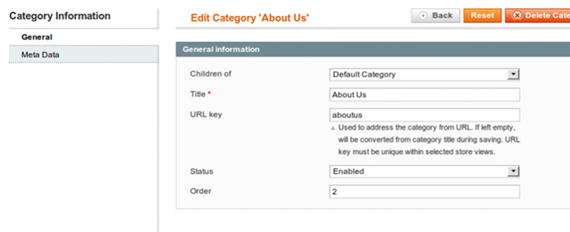
Figure 4-15. Advance CMS
Scheduled Import/Export Functionality
“Import and export product catalog data either locally or from remote FTP servers. Merchants can configure for error handling, status reporting and backup.”
Ho_Import ( https://goo.gl/AmvhV4 ) is a free import extension with a cron feature. The best paid modules are at http://goo.gl/1joJd and http://goo.gl/Qz8jfE . You can also read about other solutions here: The Best Improved Import/Export Extensions for Magento11.

Figure 4-16. Custom Bulk Product Import and Export
Customer Segmentation, Targeted Promotions, and Merchandising
“Segment customers into groups and optimize marketing initiatives by identifying specific customer groups using specific characteristics (address, gender, etc.) and/or value (purchase history, on-site browsing, etc.). Advanced segmentation capabilities include the ability to identify unknown site visitors. Whether they’re new visitors or returning customers who have not logged in, you’re able to identify and target them with special promotions to convert browsers into buyers.”
Although customer segmentation is an Enterprise-exclusive feature, you can easily get it on your CE webstore after installing one of the following extensions. Both are paid, but they are the most reliable solutions available on the market. Also, check the part about customer attributes and limited catalog access; there are useful extensions for building a proper customer-oriented strategy.
Market Segmentation Suite ( http://goo.gl/GGgzu )
Advanced Customer Segments by Amasty ( http://goo.gl/Fw7ObF )
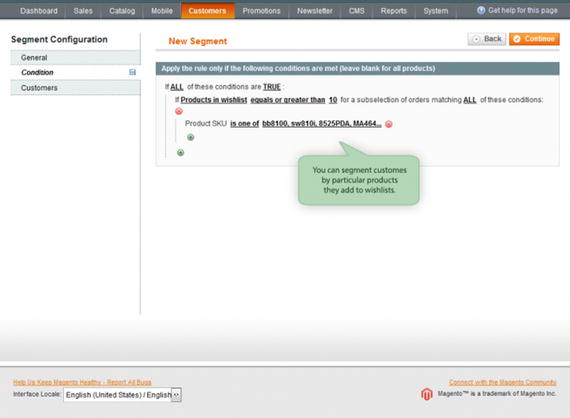
Figure 4-17. Advanced Customer Segments by Amastycustomers
Dynamic Rules
“Based Product Relations Dynamically target customers to present up-sells, cross-sells, and related products based on their specific product selections. Rules are easily administered through a condition based tool, allowing marketers to easily manage specific product suggestions, shopping cart price rules and banners to any customer segment to encourage additional purchases.”
Related Products Manager: A free extension for autogenerating related, cross-sell, and upsells products.
iWeb Auto Related Products: Free autorelated products). The extension assigns products from the same category.
FireGento_DynamicCategory: Automated category assigning by product attributes.
Automatic Related Products by aheadWorks12: A paid extension with Enterprise-level features.

Figure 4-18. Automatic Related Products by aheadWorks
If you need more Dynamic Rules extensions for your Community Edition store, read our “Complete list of the best related products extensions” blog post here: http://goo.gl/UwCu8u .
Persistent Shopping
“Customers are able to shop and maintain items of interest in their shopping cart, wish lists, recently viewed and recently compared items between browsing sessions and from device to device. Once a customer logs in to a site, a long-term cookie is established for that browser/device combination and the customer can now view the contents of their shopping cart in subsequent sessions without logging in again.”
You can easily implement this feature on your CE website with the help of the Persistent Guest Cart ( http://goo.gl/XQPhka ) and the “Checkout persistence remember data” ( http://goo.gl/clk9VB ) extensions.

Figure 4-19. Persistent Guest Cart
Automated Email Marketing Reminder
“Increase customer retention by automating email reminders to customers with abandoned shopping carts and wish lists. Email reminder campaigns are configurable and customizable for a variety of parameters including frequency, cart value, quantity and more.”
The best paid Enterprise-level extension designed to provide your store with this feature is Abandoned Cart Alerts Pro ( http://goo.gl/rhdow7 ). The same functionality is also possible with MailChimp/Mandrill integration, a subscription-based service with limited free access ( http://goo.gl/aRXMm5 ).
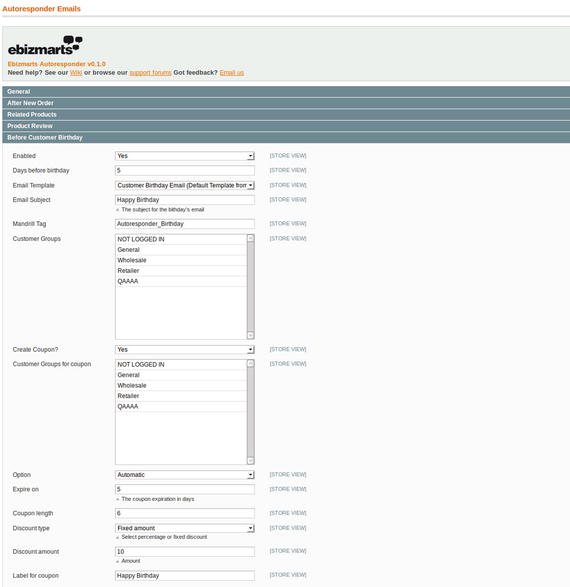
Figure 4-20. MageMonkey
Private Sales
“Restrict your catalog to specific customers. Create invitations and events for limited time sales to select customers and allow customer-initiated invitations. “
groupscatalog2 ( https://goo.gl/iwWJzG ) is a free and open way to restrict access by customer groups. Private Sales ( http://goo.gl/XV8kQZ ) is a free extension for private sales.

Figure 4-21. Private Sales
Gift Registry
“Increase revenue and capture valuable customer data with the Gift Registry feature. Those purchasing gifts can search for the registry by owner’s name, email, or gift registry ID. Privacy settings are included. Gifting Options Allow customers to purchase physical and virtual gift certificates/cards for your store. Increase the average order value with gift wrapping and gift messaging options to individual products or complete orders before checkout. Applicable pricing and taxes for gift wrapping options are easily configured by administrators.”
I’d like to draw your attention to Gift Registry by Aitoc and Unirgy_Giftcert. Both are paid extensions designed to provide your Community Edition store with gift registry features.

Figure 4-22. Gift Registry by Aitoc
Best Gift Registry Magento Extensions13
As you can see, there are lots of free and paid extensions to turn your Magento Community Edition website into an Enterprise-level solution. I should also note that security patches are available for both EE and CE. There are free community patches aimed at fixing bugs. Thus, you can easily get all Enterprise Edition features for a significantly lower price.
Multichannel Marketing
Multichannel marketing relies on different channels to reach customers . Such channels include retail stores, websites, mail order catalogs, and direct personal communication by emails, letters, text messages, or phone calls. Customers are involved in browsing, buying, returning, and pre- and post-sale services.
The objective of this marketing type is to simplify shopping from the perspective of a buyer. As a result, companies providing multichannel marketing increase customer loyalty, attract new target audiences, and gain more revenues.
Being a relatively new trend, multichannel marketing in ecommerce is already represented with various multichannel sale services and extensions . It relies on the same principles as multichannel marketing in brick-and-mortar retail , but has a limited number of instruments represented by different marketplaces and online stores.
I’m not insisting you create a brick-and-mortar store in addition to your ecommerce store, but I highly recommend that you implement core principles of multichannel marketing by integrating with core marketplaces. Luckily, you don’t have to perform everything manually, as there is M2E Pro ( http://goo.gl/K8ujr ).
With this extension , your products are listed on eBay, Amazon, and Rakuten in just 10 minutes. Configure the module after its installation, select the products that you’d like to see on these marketplaces, and you are done. Moreover, you’ll get a user-friendly interface for managing your sales channels from Magento admin. The following are other M2E Pro features:
Full control over your inventory
Centralized data management
Unlimited accounts
Scalability
Task automation
Order management
Listing tools support
The integration of all three marketplaces is absolutely free. Furthermore, there are free support options offered by M2E Pro.
Other Magento solutions and extensions for implementing multiple channel sales strategies include M.O.M. ( http://goo.gl/dyOh1u ), StoreFeeder ( http://goo.gl/PTk62F ), and Blueclaw ( http://goo.gl/1Z7Xd4 ). Explore a full list of multichannel extensions and services at Magento Multichannel Sales Services & Extensions14.
PIM
Product information management (PIM) software generates a set of product data that is up-to-date output for different media systems, such as ERP. PIM tools can be used for the integration of web sites with offline business. Moreover, they are aimed at producing data required for print catalogs or their digital equivalents.
Information management, implemented with the help of a PIM system, provides support for multiple locations and languages, making diverse partners or affiliates much more connected. All the members of such a system get a centralized interface, where they can modify product information in a cost-effective and consistently accurate manner.
Since modern retail involves numerous product data channels, brick-and-mortar stores are usually complemented by websites, mobile applications, print catalogs, and different digital feeds. Thus, PIM software becomes a tool designed for the organization and structuralization of data from different departments, systems, and people.
A PIM system utilizes a centralized and media-independent approach to data maintenance . As a result, a whole enterprise gets a simplified system for purchasing, production, and communication, as well as a new data flow suitable for repeated use in multiple systems. Moreover, foreign languages are no longer an obstacle.
Five Reasons to Use PIM in eCommerce
The following explains five reasons to use PIM in ecommerce .
With a PIM system , you are able to structure your information without spending too much time on this process. The appropriate software helps you understand how your products should be classified; the number of attributes required for your ecommerce store; core principles of navigation on your website; major data sources with their priority and influences; a required level of data quality, and so forth.
Product information management software is often used for information enrichment. Spreadsheets and ERPs never provide the most comprehensive data offered by PIM platforms. In addition, you are able to avoid different headaches, such as poor product pages or manual form filling.
Since the work of recommendation engines and search tools is based on product data, you need to provide these tools with the most comprehensive information about your products in order to satisfy visitors with the most relevant results. Such information is generated by PIM systems.
Multichannel support is another reason to use PIM. You can always connect your ecommerce website with a brick-and-mortar store or a mobile app using product information management software. Note that it is always easier to connect your Magento store with new channels through PIM than to make customizations directly to the website.
It’s more profitable to add PIM system to your enterprise right now, because with the growth of your digital store, the costs required for the integration will increase as well.
Visit the Best PIM Systems for Your E-Commerce website15.
Asim ( http://goo.gl/4uRCvg ), Salsify ( http://goo.gl/Q7rZRq ), inRiver ( http://goo.gl/NgbQXi ), and Hybris software ( https://goo.gl/fOvDTP ) are examples of PIM systems widely used in ecommerce. A full list of services with short descriptions and all necessary links is here: http://goo.gl/bH5A29 .
ERP
An enterprise resource planning (ERP) system is a set of software tools for business management . Usually, it is a suite of integrated applications that an enterprise or a company can utilize for data gathering, storage, management, and interpretation. ERP covers core business processes, tracking such business resources as raw materials, cash, production capacity, and stocks in real time. It also monitors the status of business commitments: payrolls, orders, and purchase orders. With an ERP system, you can turn your Magento store into a more robust and profitable business unit. To achieve this goal, you need a proper extension. Therefore, I am going to describe the most popular solutions next.
The first one is Embedded ERP. This extension is developed to help you with fulfilling orders and purchases, managing stocks, and performing other operations. Contrary to other similar solutions, Embedded ERP was developed especially for ecommerce businesses, so it fits perfectly with the Magento platform.
The extension covers four areas : stock management, purchasing, order preparation, product availability, and order planning. It supports multiple warehouses, stock level alerts, barcodes, inventory tracking, and sales history. Moreover, Embedded ERP lets you manage supply needs, purchase orders, and suppliers. The solution provides control over mass order fulfillment, printing, picking, and shipping labels. Advanced product availability options and order forecasts are also among the extension’s strong points.
The tool is 100% open source and highly customizable; it costs $649. You can get additional information here: http://goo.gl/DHoxVH .

Figure 4-23. Embedded ERP
There are also different apps for Odoo suite integration (formerly known as OpenERP). Odoo is a bunch of open-source business apps used by 2 million users worldwide. The suite fits both small and big businesses. Odoo includes 260 core modules and more than 4,000 community modules. To integrate this solution with your Magento store, you can use Odoo Magento Connector ( http://goo.gl/bv7djd ), Open ERP Connector by Openlabs ( http://goo.gl/nFYSM ), or OpenERP Bridge by Webkul ( http://goo.gl/dohjkK ).
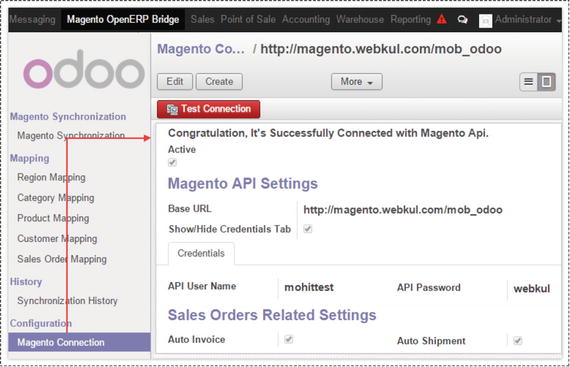
Figure 4-24. OpenERP Bridge by Webkul
eBridge Connections Accounting & ERP Integration can help you with the integration of your Magento website with 40+ ERPs. Microsoft Dynamics GP, Epicor Enterprise, Sage Peachtree, SAP Business One, Exact Macola, Intuit Quickbooks, and NetSuite are among the available solutions. eBridge costs $7,000. You can get it here: http://goo.gl/Ya0vPu .
Enterprise resource planning (ERP) System Magento Integration16
CRM
Customer relationship management (CRM ) software creates a system aimed at managing a company’s interactions with both current and future customers. CRM’s spheres of influence include marketing, sales, customer services, and technical support. Customer relationship management involves using different technologies and techniques to organize, synchronize, and automate all the aforementioned activities.
You can easily integrate your Magento store with any CRM system by installing appropriate extensions . The most reliable modules are represented next. Note that all of them work with certain CRM platforms.
Thus, SugarCRM Bridge helps with connecting your offline store to an online one by synchronizing information about your business activities. Having installed this extension, you connect your Magento store with SugarCRM as well. Accordingly, the module synchronizes purchases and site users with customers, opportunities, and cases from CRM’s database. SugarCRM Bridge costs $299 and you can purchase it here: http://goo.gl/gBaH8I .
OroCRM Bridge represents open source CRM tools for ecommerce. The extension includes different built-in customer service and sales performance improvement tools. It also provides dashboards and out-of-the-box reports to better understand your customers. You can download the OroCRM Bridge extension for free: http://goo.gl/O1PSQ1 .
By installing OneSaas Connect, you will be able to integrate Magento with OneSaas CRM. As a result, the extension will synchronize your sales, contact, accounting, and billing data between the store and the customer relationship management system on an hourly or a daily basis. Although the OneSaas Connect extension is free, you have to pay for the different plans offered by the CRM. Get more information here: http://goo.gl/WHbdos .
If you are looking for salesforce integration, pay attention to eCS CloudGento. The module works with customer, inventory, order, and shipping information from your Magento store, and integrates it with the service, which is among the leaders of on-demand cloud-based CRM solutions. Take into consideration that the extension unites all data from Magento, Amazon, eBay, Volusion, and other platforms in one place. You can purchase eCS CloudGento for $99 here: http://goo.gl/wGRWVu .

Figure 4-25. eCS CloudGento
Another useful tool is VtigerCRM because it allows you to synchronize data between your Magento store and the Vtiger CRM system . The extension works with information about customers, carts, products, orders, invoices, and so forth. You can purchase it for $299: http://goo.gl/VSUhIE .
Customer relationship management Magento integration17
SAP
SAP is a company that develops software for enterprises in all industries. The acronym stands for systems, applications, and products (in data processing). SAP ERP is an enterprise resource planning system developed by the company. There is also a solution stack of the company’s technology products known as SAP NetWeaver. It consists of such building blocks as Portal, BI, Visual Composer, AutoID Infrastructure, Composite Application Framework, Development Infrastructure, Identity Management, Single Sign-On, and so forth.
Another important set of products is represented with industry-specific software. Tools for small enterprises and midsize companies include SAP Business One and SAP Business ByDesign.
The basic idea behind SAP is to provide users with the ability to work within a corporate database accessible from a range of business apps with all necessary management features.
With the appearance of mySAP.com, the company added business applications for customer relationship, supply chain, and other kinds of management. SAP’s portfolio includes mobile business apps as well.
As you can see, there are a lot of different software products developed by the company. But what are the benefits? Let’s discuss some core SAP ecommerce opportunities.
Your warehouse, store, and website are tightly connected with SAP: a stock level is updated in real time; you always know when it is time to reorder; your online customers can see a current availability of goods.
You get a database of your online customers: this data streamlines ordering and shipping processes; the appropriate areas of the supply chain get all necessary information on time; customers enter their information only once and have the ability to track their purchases.
SAP ERP integration optimizes the work of your administrators: they get all data in one central point with real-time automated processes; all manual store data updates are eliminated; and admin time is minimized.
Holding the leading position among all ERP providers, SAP offers dozens of useful features, which are especially important for big businesses. SAP ERP supports such aspects of ecommerce as multiple locations, international operations, enhances analytics, and so forth.
Furthermore, a standalone ERP solution by SAP is constantly updated. Since there is a whole suite of business products that you can add to the main platform, the solution offers extra flexibility and an advanced level of customization.
Note that there are a lot of Magento extensions for connecting your ecommerce store with SAP ERP. Unfortunately, they are all different, so you should choose the one that suits the needs of your business.
It is also necessary to understand that after installing a module, you should perform a lot of configurations, because both Magento and SAP ERP are complex systems. Luckily, there is the SAP Integration and Certification Center ( http://goo.gl/EC3xXj ), as well as several Magento companies that work with SAP ERP integration. For instance, you can rely on InSync ( http://goo.gl/hZFGoA ), eBridge Connections ( http://goo.gl/8UBLMX ), Speed 4 Trade ( https://goo.gl/ybk2r3 ), and Netresearch ( http://goo.gl/s7dFaH ).
Please note that extensions aimed at SAP/Magento integration are not as effective as solutions offered by the aforementioned companies. That’s why I don’t describe them in this book; but you can always check our Firebear blog post related to SAP integration: Systems Applications Products integration with Magento18. There you will find additional information on Magento extensions and integration.
Dropshipping
Dropshippingis a special retail fulfillment method that eliminates the necessity to keep goods in stock. Instead, a retailer transfers customer orders to a wholesaler or manufacturer, who ships goods directly to customers. Thus, an ecommerce merchant never handles a product.
Dropshipping is easy to get started and requires much less capital than other retail methods. Other benefits include low overhead expenses, a wide selection of products, reduced risks, location independence, and high scalability. You can put products in front of an audience and start selling without getting stuck with unsold inventory or spending a lot up front.
If you are really interested in dropshipping, check out the uDropship extension and Doba platform. These are the most reliable solutions, preferred by thousands of ecommerce merchants worldwide.
As you might have guessed, the uDropship Magento extension streamlines communication between dropshippers and online stores. As a result, you, as an ecommerce merchant, get the ability to track shipments and orders handled by your dropship company or vendors. uDropship by Unirgy has a user-friendly interface and features necessary for gaining the most out of dropshipping. The extension costs $950 and offers a seamless upgrade to the uMarketplace solution. You can download uDropship here: https://goo.gl/uIh78k .
Doba ( https://goo.gl/eQb2DO ) is a platform that empowers retailers and wholesale suppliers to connect to do business . As a retailer, you get instant access to more than 2 million wholesale products from a growing supplier base. Thus, rather than working out relationships with new suppliers, you can access all of them through a single interface. Moreover, having installed the Doba Dropshipper Integration extension, you simplify the integration of your Magento store with this platform. The module costs $129 and provides the ability to automatically import products from Doba into your ecommerce store. You can get the extension here: http://goo.gl/1FhBTN .
The Best Drop Shipping Extensions for Magento19
B2B
Business-to-business is a complex of commerce transactions that occur among companies. The most common examples of B2B relations are transactions between manufacturers and wholesalers, or wholesalers and retailers.
B2B and B2C businesses have a lot of common features, but there is one fundamental difference: the target audience. B2B companies work with other businesses, while B2C companies are aimed at the end user. The audience of a B2B company can include only one consumer, while such a situation is impossible with B2C. B2B customers always buy with their heads, not their hearts. Their decisions are cold and logical. In the B2C world, the situation is often the opposite.
It’s very important to understand how this affects ecommerce websites . Due to intense competition, B2C ecommerce websites are forced to stand out from a crowd to be noticed, but it doesn’t mean that B2B websites should have a less noticeable design or don’t need any stunning features.
Furthermore, B2C websites have many more visitors, but a lower conversion rate. Thus, end customer–related merchants spend lots of resources on increasing this index. In business-to-business relations, these goals are not of the highest priority. Instead, B2B entrepreneurs focus on different business problems, such as providing real-time information and necessary connections.
It is also worth mentioning that B2B ecommerce websites use complicated customer logins , while B2C sites often rely on unobtrusive guest checkouts. B2B customers prefer long-term collaboration; they might have schedules, specific deals, and setups that are impossible to manage on a website with a guest checkout. At the same time, B2C customers are looking for new unobtrusive purchases without any registrations or logins.
Product information on both types of sites is also different. B2B ecommerce is impossible without explainer videos, spec sheets, how-to’s, webinars, and tutorials. All of these materials can be used on B2C sites as well, but less often and in smaller quantities.
The checkout process is another distinctive feature of these relation types. On B2C websites, it must be as short as possible. On B2B stores, a better devised approach is required, since B2B purchases are more unique and complex.
Fortunately, you can easily upgrade your Magento website according to B2B requirements . You just need to spend a few hours installing special extensions. The most important tools are listed on the Firebear blog here: Magento B2B extensions and solutions20. Additionally, you can check the appropriate section on Magento Connect: http://goo.gl/BdF7n .
And let’s not forget the Magento B2B Program. Although Magento was a B2B-friendly platform out of the box, there still were a lot of vital improvements required for those merchants whose businesses were aimed at other companies. Having installed extensions, they were able to turn their Magento websites into contemporary B2B platforms. Unfortunately, it was not the most convenient way to get a proper B2B experience, but it was the only one available. Since the Magento team is always trying to improve the existing platform, a new program was recently.
While B2B buying is becoming more B2C-like, the segment has a lot of new requirements. If an ecommerce website does not offer a dynamically changing set of features, customers will easily move on to competitors who provide this experience. Luckily, you can prevent your business from losing clients with the Magento B2B Program.
The platform now offers a consumer-like B2B experiences combined with flexibility and stability , so you can change any aspect of your work flow according to unique requirements of your clients or company. Moreover, there is a robust set of APIs designed for easy integration with all possible external systems widely used in a B2B segment. With the Magento B2B Program , you will be able to do the following:
Provide a consumerized self-serve shopping experience
Improve operational efficiency by getting higher-value data
Get an Enterprise-level platform with top-notch functionality, performance, extensibility, and flexibility
Magento B2B features include advanced account management, quick bulk orders, inventory tracking across multiple locations, negotiated pricing terms for each client, ERP integration, and mobile support.
As you can see, Magento offers a lot for making your B2B store even more user friendly, but this doesn’t mean that you can ignore the modules mentioned. Utilize the new opportunity along with existing solutions to get the highest possible business results. You can find more information about the Magento B2B program here21.
Magento B2B
This one is an internal management system for ecommerce that connects an online shopping system, an accounting system to a logistics system, and an inventory tracking system. With this extension, your business runs faster and more accurately, saving you much in costs.
Magento B2B22
Magento Extensions for Quick/Fast Order
You can also utilize Magento Extensions for Quick/Fast Order in your B2B business. The best modules are gathered here: Magento Extensions for Quick/Fast Order23.
Customer Activation
This Magento extension provides additional control over customers by making it impossible to log in until the account has been activated by the admin. It is a very useful feature, especially if you operate a big enterprise and want to avoid problems related to incorrect information posted by your customers.
Customer Activation24
Multivendor Marketplace
Another Enterprise-level feature provided by Magento is a multivendor marketplace. You can utilize the platform for running this type of ecommerce business . The core difference between a multivendor marketplace and an ordinary ecommerce shop lies in the approach to traffic generation and SEO. In a marketplace, you always need to split your marketing and SEO strategies into two separate branches: one at aimed at vendors and sellers, the other at buyers. The same is about the construction of your website. As an ecommerce store owner, you won’t need to sell on your own, as you will get interest from what your vendors are selling.
If this idea seems expedient, you can utilize the uMarketplace extension by Unirgy, since it is the best available solution. The module will transform your ecommerce store into a powerful online shopping mall. All your vendors will be able to sell their products through specific microsites, but within a centralized product catalog. In addition, uMarketplace provides all the tools necessary for configuring and automating a dropshipping workflow on your store. Other useful features include multiple ways to integrate with vendors, different shipping options, advanced order and shipment management, commission rates, various promotions, and fully configurable and controllable customer/vendor interactions. The uMarketplace extension costs $1,650. You can get it here: http://goo.gl/vb2Nhd . Don’t forget about support and assistance, since Unirgy offers these options for its clients. The company has an amazing team that is always ready to help.
I should also mention that every Magento template from ThemeForest can be adapted to uMarketplace. The same for extensions: most high-quality modules can be configured according to the requirements of a multiple-vendor marketplace. In both cases you can rely on extensions and a template developer, or on the Unirgy team.
The situation with payment systems is more complicated. Not all providers offer multivendor features, so I recommend that you check PayPal Marketplace Payouts: https://goo.gl/yWyJ2S . For a full list of solutions, go here: Best Magento extensions for building Magento based multi vendor marketplace25.
Dynamic Pricing
Due to its flexible pricing strategy, dynamic pricing is widely used across different industries, but it is relatively new to ecommerce. Among all pricing strategies, it is the most relevant to the needs of electronic commerce.
To create a successful dynamic pricing strategy, you need tons of information about the market. For various industries, it requires a lot of time and effort to collect necessary data, but ecommerce is an exception. In the age of big data, online retailers can easily get all information related to pricing of major competitors, key market trends, or sales volume for a certain period. With such abilities, ecommerce creates a perfect environment for the implementation of dynamic pricing, which is no longer a privilege of giant companies. It has become an effective way to boost sales and revenues—even for the smallest retailers.
At first blush, dynamic pricing seems to be all about price changes, but it is not true. Its second major purpose is surveillance of competitor pricing. Keep in mind that your price matters only in relation to what your competitors offer. You don’t need to provide the lowest possible price to become successful; instead, you should rely on relative pricing. And all your relative prices should be flexible in order to stay effective. Therefore, dynamic pricing is the best possible ecommerce pricing strategy. You can implement it within your Magento store with the aid of the following platforms: Wiser, Ventata, or Boomerang Commerce. See our full list of DPO solutions here: Best Dynamic Pricing Optimization (DPO) Services for eCommerce26.
For example, Wiser’s portfolio consists of multiple products designed to provide retailers with the ability to stay competitive and profitable. WisePricer is a flagship solution of the company. It is a dynamic pricing engine, which works in real time. WisePricer monitors market situation, analyzes data, and automatically sets new prices according to received information. It provides ecommerce merchants with the ability to boost profit margins, get better revenue, and implement more advanced merchandising due to a right pricing strategy. Another company’s solution is WiseMapper. It is a MAP monitoring tool for manufacturers, which helps with pricing protection. Visit the official website here: http://goo.gl/tKg5eS .

Figure 4-26. Wiser
Ventata is another provider of software for dynamic pricing optimization. Working with all major ecommerce platforms, it analyzes historical orders and determines sales velocity, curves of supply and demand, and repricing intervals, and it offers past-price testing. All of this information is displayed on a convenient control panel, where you can mix and match pricing strategies for all of your products. Get more information here: https://goo.gl/yo8kP .
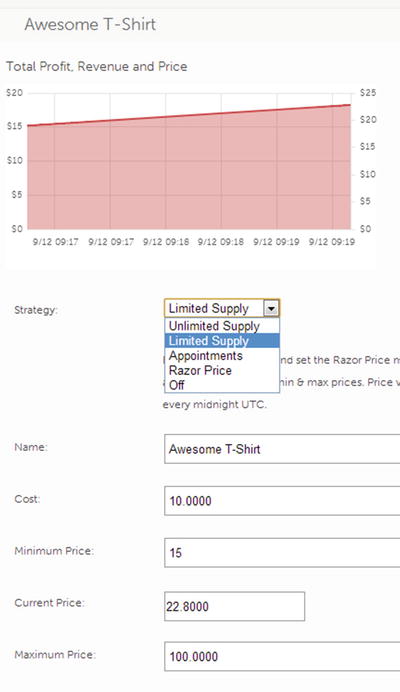
Figure 4-27. Ventata
Boomerang Commerce provides software for real-time data analytics, optimization, and machine learning, which brings dynamic price optimization to ecommerce. It tracks fixed and variable costs at different levels to measure true profitability of every online store. The platform provides rule-based automated price optimization, A/B testing, “What-if” analysis, and other useful features within a single dashboard. The official website is here: http://goo.gl/nHZpVW .
Conclusion
Congratulations! You’ve just become an advanced ecommerce merchant. Now, you know how to turn your CE store into an EE store. Multichannel enterprise is no longer a problem. PIM, ERP, CRM, and SAP are much more than just acronyms. You know how to sell goods without even seeing them. B2B ecommerce is not an obstacle anymore. Dynamic pricing optimization is among your future strategies. And a multivendor marketplace is a type of store that you can implement.
What’s the next step in your Magento development? The answer is obvious: custom development. In the next chapter, I’ll provide you with insights into the basics of this sophisticated topic.
Footnotes
14 https://firebearstudio.com/blog/magento-multichannel-sales-services-extensions-ebay-amazon-integration.html
15 https://firebearstudio.com/blog/best-pim-product-information-management-systems-for-your-e-commerce-website.html
